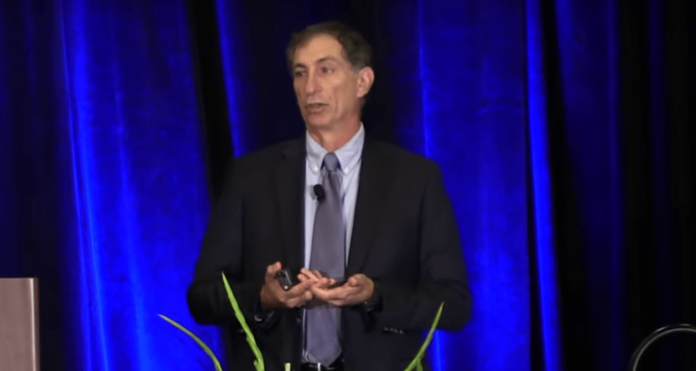ViaSat’s Mark Dankberg discusses the role of satellites in the wireless ecosystem
SAN DIEGO–Connecting all through communication. That’s the theme of the 2015 Globecom event, hosted by the IEEE Communications Society.
Event General Chair Ed Tiedemann said the theme “evokes the Internet of Things, the Internet of Everything, the connectivity revolution that’s happening now.” And San Diego is an ideal setting based on its extensive history the wireless telecommunications industry, he said.
Tiedemann called San Diego “the largest wireless community worldwide,” and gave a historical overview of the how in 1906 the local U.S. Navy base led the way by setting up a five kilowatt radio station.
After introductory comments, ViaSat CEO Mark Dankberg kicked off the first keynote session of the week by channeling American humorist Will Rogers: “It’s not the things that we don’t know that give us trouble; it’s the things we think we know but it ain’t so.”
Dankberg continued, “Today, connecting the unconnected in the world is really an economic problem. Given the satellite systems that already exist, you can communicate from anywhere in the world already. The issue is how do you do that affordably?”
He gave the analog of satellite based television broadcast, which “had returns on capital that were better than any of the other forms of telecom. When you’re talking about space for broadcast or communication…you need the right tool for the job.”
He said satellites designed for broadcast aren’t good at supporting unicast communications. “That makes no sense. What you really need to do, if you want to be capital efficient from space, you need to apply a tool for unicast.”
“When you think about broadcast in the terrestrial sense…you’re thinking about towers. Often you’ll try to place a tower someplace, a highpoint. But when you take that same spectrum…and apply it for unicast, such as through wireless, what you want to do is pretty much the opposite. Instead of using spectrum one time…you want to have a lot of highly dispersed cellular towers. Instead of having one high powered satellite with a big beam broadcasting the same thing to everybody, what you really want to do is you want to make lots and lots of spot beams to get frequency reuse.”

